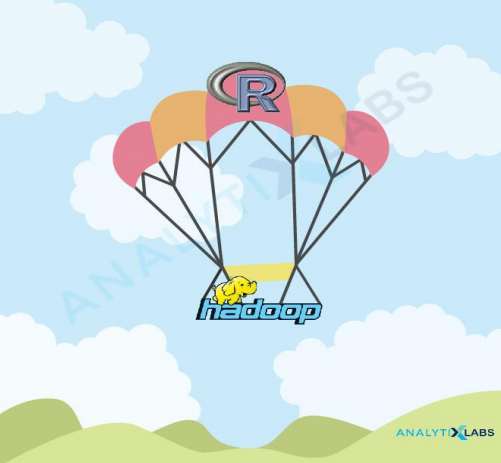In the beginning, R and Hadoop were poles apart. They didn’t tie-up well enough with each other. Hadoop is an epitome for mounting complex operations and tasks on huge amount of data but in contrast it lacks robust statistical techniques, whereas R was exceptional at running summary statistics, advanced analytics, modelling and plots but it requires that all objects be loaded into the main memory of a single machine. As you can see from these limitations of their diverse architecture, when someone needs a blend of strong features of visualization and statistical and predictive analytics with vast capabilities of handing big data that is supported by Hadoop, it seems to be a good idea to integrate R with Hadoop to realize its potential benefits. It also addresses the pain point that arises due to the advent of workflow that constantly has you going back to MapReduce and then bring data into R. The concept of R + Hadoop is an evolution.
The principal goal of integrating R with Hadoop is to motivate data scientists write R code and still make it scalable, because by default R code cannot run in Hadoop clusters. By combining R with Hadoop, data scientists are able to run advanced analytics and machine learning applications with larger dataset. Data scientists need not learn a new language in order to carry out this integration with Hadoop. R open source packages can be utilized to write mapper and reducer functions.
End on integration between R and Hadoop enables data scientists to explore Hadoop data. The other purpose is to exploit R’s programming syntax and coding paradigms, while making sure that the data operated upon stays in Hadoop Distribution File System (HDFS). R datatypes functions as substitutes to these data stores, which means data scientists do not need to think about low-level MapReduce constructs or any Hadoop specific scripting languages like Hive, Pig etc.
R and Hadoop integration offers analogous and segregated execution of R code across the Hadoop clusters. It shields many of the intricacies in the underlying HDFS and MapReduce frameworks, allowing R to carry out data analytics on both structured and unstructured data. As a result of this, the scalability of R statistical engine permits data scientists to make use of both pre-defined statistical techniques, as well as write new algorithms themselves.
Since the familiarity of R and Hadoop integration increases more and more, I think Big Data Analytics will become an everlasting evolution. With the help of this parallel Data Analytics platform, bigger organization can easily derive insightful insights to obtain proliferative advantages from Big Data Analytics.
- Using R with Hadoop facilitates horizontal scalability of statistical calculations
- All the calculations are performed by loading entire data in RAM
- Scaling up RAM has an upper limit
- Hadoop framework allows parallel processing of massive amount of data
Big giants such as Cloudera, Hortonworks, MapR and others, along with database vendors and others, are all intensely mindful of the supremacy of R among the large and growing data science community, and R’s prominence as a means to extract insights and value from the expanding data repositories assembled on the crest of Hadoop.
The other substitutes to scaling machine learning are Apache Mahout, Apache Hive and some commercial versions of R from Revolution Analytics, Segue framework among others. Give it a whirl!
























